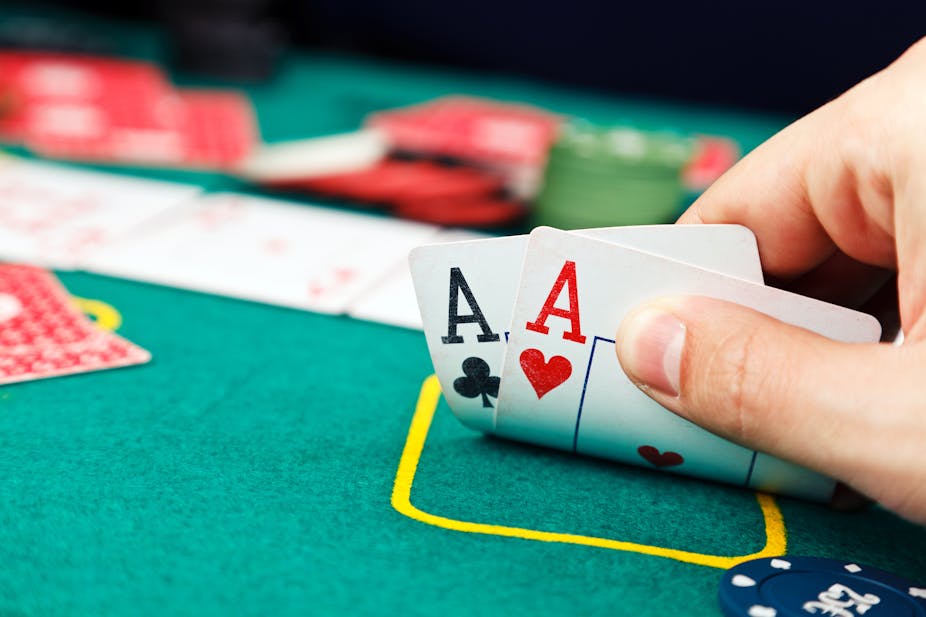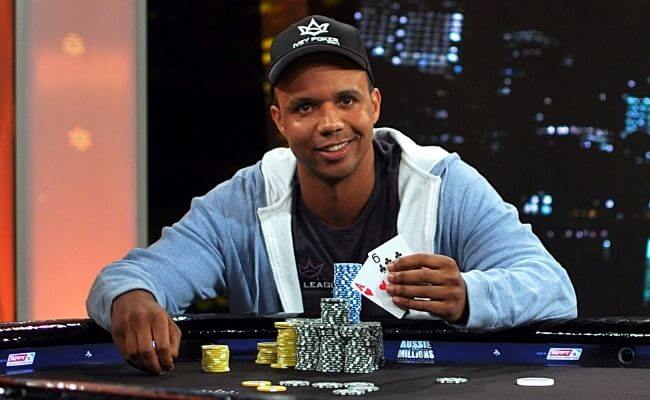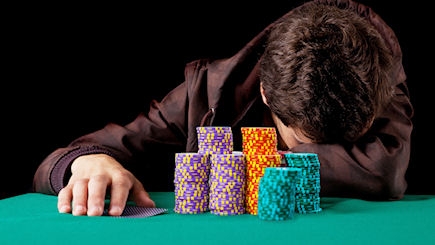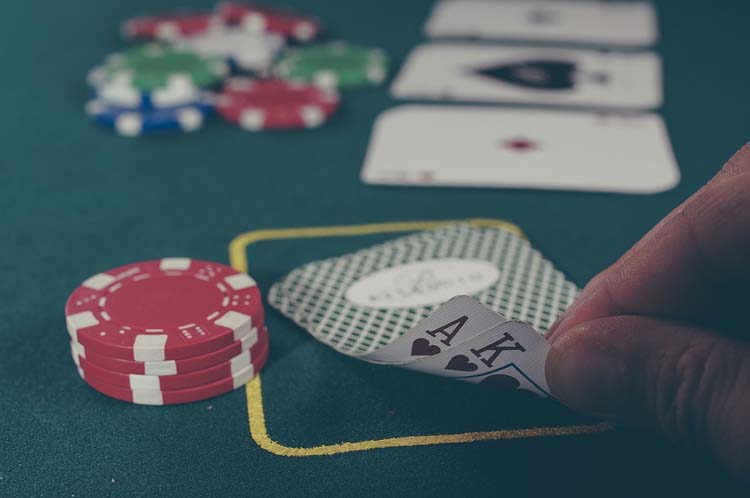How Long Are Poker Games
OBJECTIVE: The objective of poker is to win all the money in the pot, which consists of bets made by players during the hand.
Keeping your home poker game cheap and fun goes a long way toward making it safe, as well. Know Your Players Seems obvious, but if you know everyone who plays, then no moles, mechanics, or any other unsavory characters are going to be playing in your game. 8½ Hours Prepare for a different kind of poker night in a very different kind of club. In Poker Night at the Inventory, you'll deal with Penny Arcade's clever, cunning Tycho, Team Fortress 2's hulking Heavy, Homestar Runner's self-proclaimed 'awesome icon' Strong Bad and the hyperkinetic 'rabbity-thing' from Sam & Max. Online, you can usually see between 60 and 90 hands per hour. This dramatically changes the calculations for tournament speed. Slow tournaments are blind levels of 30 minutes or longer while 15 minutes is average speed. Turbos are typically 5 minutes while hyper-turbos have 3 minute blinds.
NUMBER OF PLAYERS: 2-8 players
NUMBER OF CARDS: 52-card decks
The Sequel to Poker Night at the Inventory, this time the cast features the dog detective Sam from the Sam & Max franchise, The Swedish Murder Machine Brock Samson from The Venture Bros; The Groovy King of Deadite Slaying Ash Williams from The Evil Dead franchise and The Robotic Annoyance Claptrap from the Borderlands series.
RANK OF CARDS: A,K,Q,J,10,9,8,7,6,5,4,3,2
TYPE OF GAME: Casino
AUDIENCE: Adult
INTRODUCTION TO POKER
Poker is foundationally a game of a chance. The addition of betting to the game added new dimensions of skill and psychology which allows players to strategize within a game that is largely based on random chance. The name poker is thought to be an English derivative from the Irish “Poca” (pocket) or French “Poque,” although these games may not be the original ancestors of Poker. Since the conception of poker, there have been numerous variations created of the classic game. Poker is a family of card games, so the information below is an outline of principles that are applied to several forms of poker.
THE BASICS
Poker games use standard 52 card decks, however, players may choose to play variants which include Jokers (as wild cards). The cards are ranked in poker, from high to low: A, K, Q, J, 10, 9, 8, 7, 6, 5, 4, 3, 2. In some poker games, aces are the lowest card, not the high card. In a deck of cards, there are four suits: spades, diamonds, hearts, and clubs. In a standard poker game, the suits are not ranked. However, “hands” are ranked. Your hand is the five cards you hold at the time of showdown, which happens after all the betting is finished and players show their cards to determine who wins the pot. Typically, the person with the highest ranking hand wins, although in Lowball games low hand wins. In the event of a tie, the pot is split.
To determine the highest ranking hand, follow this guide: Poker Hand Rankings
THE PLAY
Starting to the dealer’s left, cards are dealt clockwise around the table, one at a time.
In Stud poker, there is a round of betting after each card is dealt. The first card dealt is face-down, this is the hole card. There may be an ante or bring in bet players must pay first, and then normal betting ensues. Players bet strategically as their hand grows based on the strength of their cards and their opponent’s cards. The player who bets the most wins if everyone else folds. At the showdown, however, the player left with the highest hand wins the pot.
In Draw poker, five cards are all dealt at once, two of which are dealt face-down.These are hole cards. After the deal, a round of betting ensues. Betting continues until all players are “square” with the pot, meaning if a player raises during betting, you must at least call (pay the pot the new bet amount) or choose to raise the bet amount (forcing other players to put more money in the pot). If you do not want to match the new bet, you may choose to fold and throw in your hand. After the first round of betting players may discard up to three unwanted cards for new cards. This ushers in a new round of betting. After the pot is square, players reveal their cards in the showdown and the player with the highest hand wins the pot.
BETTING
A poker game does not go without betting. In many poker games, you must pay an ‘ante’ in order to be dealt cards. Following the ante, bring in bets and all following bets are put in the pot in the middle of the table. During gameplay in poker, when it is your turn to bet you have three options:
- Call. You may call by betting the amount wagered by a previous player. For example, if you bet 5 cents and another player raises the bet amount to a dime (raises 5 cents), you may call on your turn by paying the pot 5 cents, thus matching the 10 cent bet amount.
- Raise. You may raise by first betting the amount equal to the current wager and then bet more. This increases the wager or bet amount on the hand which other players must match if they wish to remain in the game.
- Fold. You may fold by laying down your cards and not betting. You do not have to put money in the pot but you do sit out on that hand. You forfeit any money wagered and have no opportunity to win the pot.
Betting rounds continue until all players have called, folded, or raised. If a player raises, once the raise has been called by all remaining players, and there was no other raise, the betting round ends.
VARIATIONS
Poker has numerous variations which are all loosely based on the same structure of the play. They also generally use the same ranking systems for hands. In addition to Stud and draw poker, there are two other main families of variants.
- STRAIGHT. Players receive a full hand and there is one round of betting. This is the oldest form of poker (with stud poker being the second oldest). The origin of the game is from Primero, a game that eventually evolved into three card brag.
- COMMUNITY CARD POKER. Community card poker is a variant of stud poker, often it is referred to as flop poker. Players receive an incomplete deck of face-down cards and a certain number of face-up “community cards” are dealt to the table. The community cards may be used by any player to complete their five-card hand. The popular Texas Hold Em’ and Omaha poker are both variants of poker in this family.
Poker How To Win
REFERENCES:
https://www.contrib.andrew.cmu.edu/~gc00/reviews/pokerrules
http://www.grandparents.com/grandkids/activities-games-and-crafts/basic-poker
https://en.wikipedia.org/wiki/Poker
- General principles
- Betting limits
- Principal forms
- Stud poker
- Community-card poker
- House-banked games
Our editors will review what you’ve submitted and determine whether to revise the article.
JoinHow Long Are Poker Games Online
Britannica's Publishing Partner Program and our community of experts to gain a global audience for your work! William N. ThompsonSee All Contributors
Poker, card game, played in various forms throughout the world, in which a player must call (i.e., match) the bet, raise (i.e., increase) the bet, or concede (i.e., fold). Its popularity is greatest in North America, where it originated. It is played in private homes, in poker clubs, in casinos, and over the Internet. Poker has been called the national card game of the United States, and its play and jargon permeate American culture.
Although countless variants of poker are described in the literature of the game, they all share certain essential features. A poker hand comprises five cards. The value of the hand is in inverse proportion to its mathematical frequency; that is, the more unusual the combination of cards, the higher the hand ranks. Players may bet that they have the best hand, and other players must either call (i.e., match) the bet or concede. Players may bluff by betting that they have the best hand when in fact they do not, and they may win by bluffing if players holding superior hands do not call the bet.
General principles
There are forms of poker suitable to any number of players from 2 to 14, but in most forms the ideal number is 6, 7, or 8 players. The object is to win the “pot,” which is the aggregate of all bets made by all players in any one deal. The pot may be won either by having the highest-ranking poker hand or by making a bet that no other player calls. The following principles apply to nearly all forms of poker.
Cards
Poker is almost always played with the standard 52-card deck, the playing cards in each of the four suits (spades, hearts, diamonds, clubs) ranking A (high), K, Q, J, 10, 9, 8, 7, 6, 5, 4, 3, 2, A (low only in the straight [a series of five cards numbered consecutively] or straight flush [a series of five cards numbered consecutively within the same suit] 5-4-3-2-A and in certain variants described below).
In social play, especially in “dealer’s choice” (i.e., a card-playing session in which each player takes a turn at dealing the cards and selecting the game), certain cards may be designated wild cards. A wild card stands for any other card its holder wishes to name. There are many methods of introducing wild cards into the game. The most popular are:
- Joker. A 53-card pack is used, including the joker as a wild card.
- Bug. The same 53-card pack including the joker is used, but the joker—here called the bug—counts only as a fifth ace or to fill a flush [a series of five cards of the same suit], a straight, or certain special hands.
- Deuces wild. All four deuces (2s) are wild cards.
- One-eyes. In the standard pack the king of diamonds, jack of spades, and jack of hearts are the only cards shown in profile. They are often designated as wild cards.
Rank of poker hands
The rank of standard poker hands is determined by their odds (probability). Two or more identical hands tie and divide any winning equally. The suits have no relative rank in poker. When there is any wild card in the game, the highest possible hand is five of a kind, which beats any straight flush. When there are several wild cards, there may be identical fours of a kind or threes of a kind, in which case ties are broken by the highest unmatched cards or secondary pairs (in a full house [a five-card hand made up of three of a kind and a pair]).


| poker hand | number of ways the hand can be made | approximate odds of getting the hand in five cards |
|---|---|---|
| royal flush | 4 | 1 in 649,740.00 |
| straight flush | 36 | 1 in 72,193.33 |
| four of a kind | 624 | 1 in 4,165.00 |
| full house | 3,744 | 1 in 694.16 |
| flush | 5,108 | 1 in 508.80 |
| straight | 10,200 | 1 in 254.80 |
| three of a kind | 54,912 | 1 in 47.32 |
| two pairs | 123,552 | 1 in 21.03 |
| one pair | 1,098,240 | 1 in 2.36 |
| no pair | 1,302,540 | 1 in 1.99 |
Deal
At the start of the game, any player takes a pack of cards and deals them in rotation to the left, one at a time faceup, until a jack appears. The player receiving that card becomes the first dealer. The turn to deal and the turn to bet always pass to the left from player to player. For each deal, any player may shuffle the cards, the dealer having the last right to shuffle. The dealer must offer the shuffled pack to the opponent to the right for a cut. If that player declines to cut, any other player may cut.
A professional dealer is used in poker clubs, casinos, and tournament play, where a round disc (known as a dealer button) is passed clockwise each hand to indicate the nominal dealer for betting purposes. Also, such environments almost invariably charge the players either by setting an hourly rental fee for their seats or by “raking” a small percentage (say, 5 percent) from each pot.

Betting procedure
In each deal there are one or more betting intervals according to the specific poker variant. In each betting interval, one player, as designated by the rules of the variant being played, has the privilege or obligation of making the first bet. This player and each player in turn after him must place in the pot the number of chips (representing money, for which poker is almost invariably played) to make his total contribution to the pot at least equal to the total contribution of the player before him. When a player does this, he is said to be in the pot, or an active player. If a player declines to do this, he discards his hand and is said to drop or fold, and he may no longer compete for the pot.
Before the deal, each player may be required to make a contribution to the pot, called an ante. In each betting interval, the first player to make a bet is said to bet, a player who exactly meets the previous bet is said to call, and a player who bets more than the previous bettor is said to raise. In some variants, a player is permitted to check, which is to stay in without betting, provided no other player has made a bet in that betting interval. Since a player cannot raise his own bet, each betting interval ends when the betting turn has returned to the person who made the last raise or when all players have checked.
At the end of each betting interval except the last, dealing is resumed. At the end of the last betting interval, there is the “showdown,” in which each active player shows his full hand, and the highest-ranking hand wins the pot.
Betting limits

There are “no-limit” or “sky’s-the-limit” games, but in practice most poker games place some limit on what one may bet in any game. There are three popular methods.
Fixed limit
In fixed-limit games, no one may bet or raise by more than the established limit. In draw poker the limit is usually twice as much after the draw as before—for example, two chips before the draw, four chips after. In stud poker the limit is usually twice as much in the final betting interval as in previous betting intervals. (The higher limit applies also when any player’s exposed cards include a pair.) These respective forms of the game are described below. In a fixed-limit game a limit is usually placed on the number of raises that may be made in any betting interval.
Pot limit
In pot-limit contests, a player may bet or raise by no more than the amount in the pot at the time the bet or raise is made. When raising, the player may first put in the pot the number of chips required to call the previous bet and then raise by the number of chips in the pot. When pot limit is played, it is customary also to place a maximum limit on any bet or raise, regardless of the size of the pot.
Table stakes
This method most closely approximates the no-limit game. Each player’s limit is the number of chips he has on the table at the beginning of the deal. He may not bet more, but for this amount he may call any higher bet (go “all in”) and compete for the pot in the showdown. Other players having more chips may continue to bet, but their further bets go into one or more side pots in the manner decided among the players who contributed fully to the side pot. When a player drops out of any side pot, he drops out of the original pot as well, in effect surrendering his rights in the original pot to the player whose later bet he did not call. Thus, there may be different winners of the main pot and various side pots.
- key people
- related topics